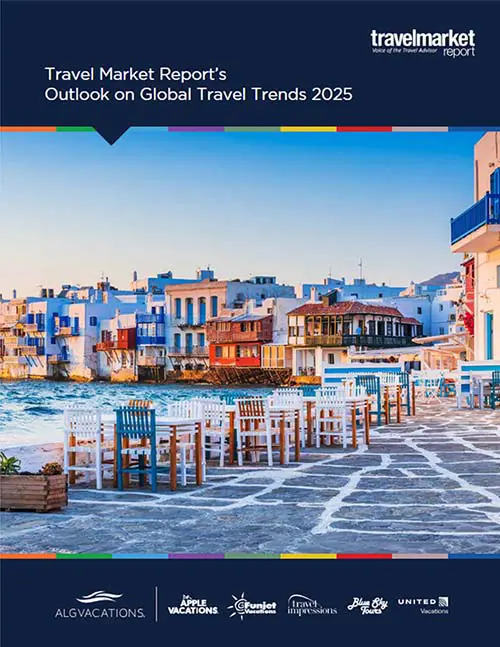USTOA’s Ethiopia Trip Pulled Triumph from Tragedy
by David Cogswell
The tour operator association’s annual out-of-country board meeting almost didn’t happen after the devastating Boeing 737 MAX 8 incident, but the group persevered and discovered the world’s fastest-growing travel economy. Photo: Shutterstock
When Terry Dale, president and CEO of the U.S. Tour Operators Association, went to Ethiopia last February to finalize the itinerary for the association’s annual out-of-country board meeting, he had no way of knowing what extraordinary circumstances would intervene and almost derail the whole effort.
The trip was set for Mar. 24-30, 2019. Then on Mar. 10, Ethiopian Airlines flight 302 crashed, killing 157 passengers and throwing the Ethiopian travel industry and the global airline industry into a state of turmoil.
As Ethiopia’s national airline and its tourism industry reeled from the tragedy, panic spread and questions flew. Is the airline safe? Is the country safe? Are Boeing 737 MAX 8 aircraft safe? For travelers the question arose, as it always does in such cases: Should we cancel our trip until things settle down and we can get a better assessment of the risk?
The tour operator association was on the spot. Do they cancel in the face of an incident of this magnitude? This was not an isolated incident. A similar crash with a 737 MAX 8 had taken place only a few months before with an airplane operated by Lion Air out of Jakarta, Indonesia, killing everyone onboard.
In the early days after the crash, there were many questions about the reliability of the 737 MAX 8s and few answers. It took the FAA several days to take action to ground the 737s until the questions could be resolved. During that time, fears and rumors multiplied in regard to the safety of air travel. The USTOA had to make a commitment in the presence of a great deal of uncertainty.
Full speed ahead
“I thought it was critical for us to continue,” said Dale. “It would have been the wrong message had we not gone.”
The Ethiopian Tourism Organization (ETO), which was hosting the tour operators on the trip, asked whether the tour operators wanted to delay the trip a month until things settled down and there was more clarity about the crash and its implications in regard to the safety of air travel.
Dale considered the proposal, then rejected it and left the decision to the ETO whether to proceed as planned.
“With my members’ schedules, it doesn’t make sense to delay,” Dale told the Ethiopians. “We’re going to lose half the people.”
The association decided to go forward with the trip. “It was the right thing to do,” said Dale. “And they were so grateful. It was amazing.”
If the Ethiopian Tourism Organization had said they needed to postpone the trip due to the unexpected circumstances, the USTOA would have respected their decision and postponed.
“Ultimately, we felt it was up to them to make the decision,” said Dale. “We knew that for us to come a week later, with everything the members were juggling in their individual schedules, it wouldn’t have made sense. We said, ‘We are ready to come, and happy and proud to come, but you have to feel comfortable that it’s in your best interest based on what you’re going through.’”
The Ethiopian Tourism Organization asked for 48 hours to work through the situation, then came back with their decision: To go ahead with the trip.
Stunning growth
The trip had been three years in the works. During that time, Ethiopia’s tourism industry had made tremendous strides, moving from a place that was virtually off the tourism map, to being the brightest shooting star on the global tourism horizon.
In 2018, The World Travel & Tourism Council proclaimed that Ethiopia’s tourism economy grew 48.6%, more than that of any country in the world.
At the opening of Indaba, Africa’s travel trade show in Durban, South Africa, in early May, South Africa’s Minister of Tourism Derek Hanekom heaped generous praise on Ethiopia for its stunning success and the example it set for other African countries.
“Ethiopia was Africa’s fastest-growing travel economy, and the fastest in the world,” said Hanekom. “This extraordinary growth is mostly attributed to Ethiopia’s success in establishing itself as a regional transport hub, which played an important role in spurring its economic growth, something which many of our countries could learn from, especially South Africa. Ethiopia must be acclaimed for bringing large volumes of tourists to the whole African continent.”
Ethiopia’s national carrier was instrumental in creating the country’s tourism success story. For a moment it looked like an airplane crash could stall or even reverse the trend.
The timing couldn’t have been worse. If the contingency of 40 tour operators from America’s elite tour operator association had not gone through with the trip, the amount of loss for the country’s tourism industry would have been incalculable. As it turned out, it was a boon to Ethiopia.
“All in all, I’m very proud,” said Dale. “I’m proud we went. The trip far exceeded what I hoped for. It doesn’t mean we didn’t have some hiccups, but we have hiccups in all these experiences. There’s a protest in the middle of the capital city that no one knew about, so we’re sitting in traffic. But that happens.”
Ethiopia’s tourism industry had the opportunity to showcase its offerings to a group of 40 tour operators, each of whom could potentially represent a tremendous amount of recurring business in the future.
During the three years since the trip was originally set, Ethiopia’s tourism industry has evolved strikingly.
“When we decided to go to Ethiopia three years ago,” said Dale, “the first reaction was, ‘Wow! Why would USTOA go to Ethiopia?’ The second reaction was, ‘You do know that there’s no such thing as a five-star hotel? They are just kind of middle-of-the-road, at best.’”
But since that time, many new hotels have been built and Ethiopia has a much stronger tourism offering than it had previously. Dale pushed for the best hotel offering in each location, which resulted in the group staying in hotels that were not entirely ready for occupancy.
“In three of the locations, we stayed in new properties that were 90% done,” said Dale. “Their concern was that when a property first opens anywhere, the service is not always up to standard. But I convinced them that our members need to know about the new product coming online. They want to book these new properties even if they are only 90% complete. They need to know about them.”
In the end, the USTOA members were glad they went, and it turned out to be a strong boost for Ethiopia’s tourism industry.
“So many things about this trip were extraordinary,” said Dale. “I don’t know how much of it could be attributed to the tragedy of the country’s airline, or if it can be just attributed to spirit of people.
“We had three small flights in-country and everywhere we went, whether we got off a plane or pulled in on a motorcoach, there would be a gathering of the mayor, the regional president, dancers and musicians. It was a celebration every single step of the way. They were so excited to have us there. In the rural communities, they would all come out to greet us. It was unbelievable.”
The itinerary started in the capital city of Addis Ababa, went on to Bahir Dar, Gondar, Lalibela, and back to the capital city. The group got to meet with President Sahle-Work Zewde, Ethiopia’s first female president.
As for future business that may be generated from the visit, prospects look good. In a post-tour survey of the 40 tour operators on the trip, 45% said that they will be offering new tours of Ethiopia, and 33% said they may be.
USTOA operators are responsible for hosting 9.8 million travelers annually, generating $19 billion in revenue. They can bring a significant boost in business to any country they set their sights on. Dale said he thinks Ethiopia may surge to the top of the heap of hot new destinations in the near future.
“The industry is always looking for ‘Where’s the next place?’” said Dale. “I feel like Ethiopia is poised to step into that space. In our most recent Price Waterhouse study, for the first time, Ethiopia entered the top 10 of emerging destinations from our members’ perspective. I think they are poised to be one of those ‘Wow! Where did this come from?’ places. But they are ready.”
The kindness of the people
Dana Santucci, USTOA’s chairman, told Travel Market Report that the operators are now sizing up what they learned from their trip, trying to figure out how to sell Ethiopia, how to fit it into their product lines, how to present it to customers.
“It’s still emerging,” said Santucci. “It’s not a place for the first-time traveler. But with the incredible airlift Ethiopia has, it creates the potential of combinations. It would be interesting to combine with Kenya or Tanzania. If you’re going so far to get to Africa, you want to see as much as possible.”
For Santucci, it was a series of moments of amazement to realize how much Ethiopia has to offer and how little she previously knew about it.
At Lalibela, the operators toured the rock-hewn churches, which were built by hollowing out the rock of a mountainside. “I didn’t even know about them,” said Santucci. “Then being there, taking the rugged climb, trying to get your head around how these were even built – it was unreal! We were greeted by 200 priests all wearing turbans and robes and chanting. I am not a highly religious person, but the spirituality was overwhelming. “
At Gondar, the group toured 17th century castles where a royal empire thrived during the days when America was barely even a thought.
“The Ethiopians are proud of the fact that they were never colonized, the only country Africa,” said Santucci, “It’s so interesting to think of how that has affected them and how the country has continued to develop. I came home wanting to learn so much more about it. For me, it just opened the door to how much potential there is.”
On top of the list of her favorite experiences of Ethiopia, said Santucci, was simply “the kindness of the people. I found the Ethiopian people to be so warm and welcoming everywhere we went. We were able to stop and have conversations in every town. I really loved that, not only to see the place, but to immerse yourself in another culture. Our mission is to open the world.”
























